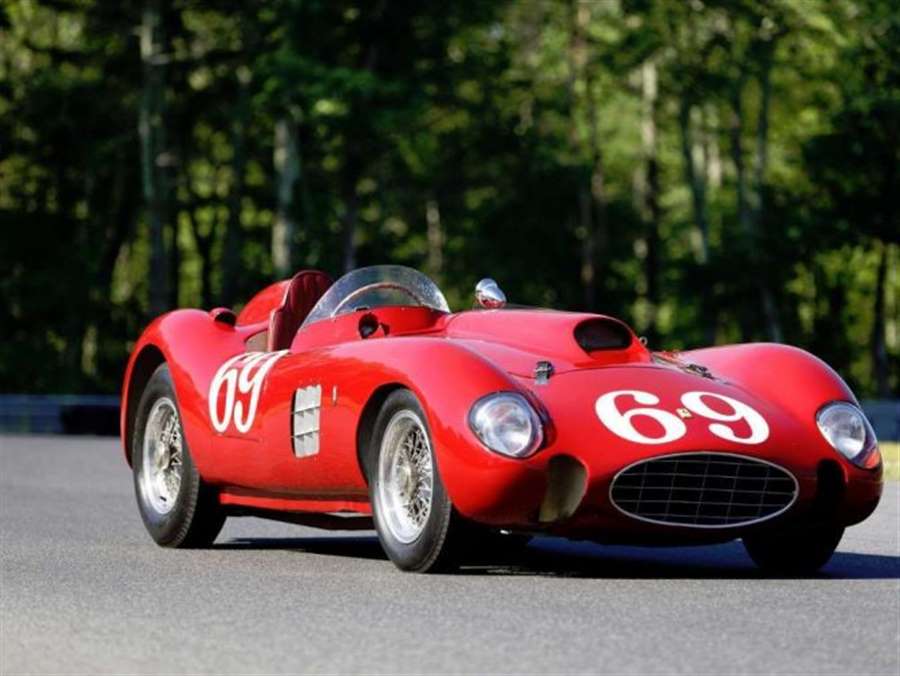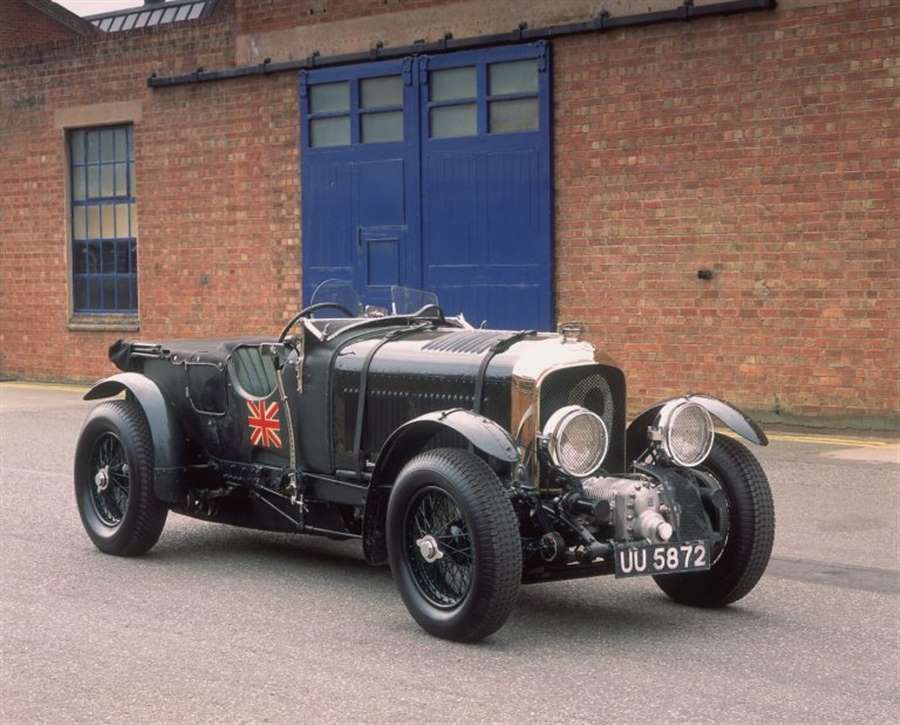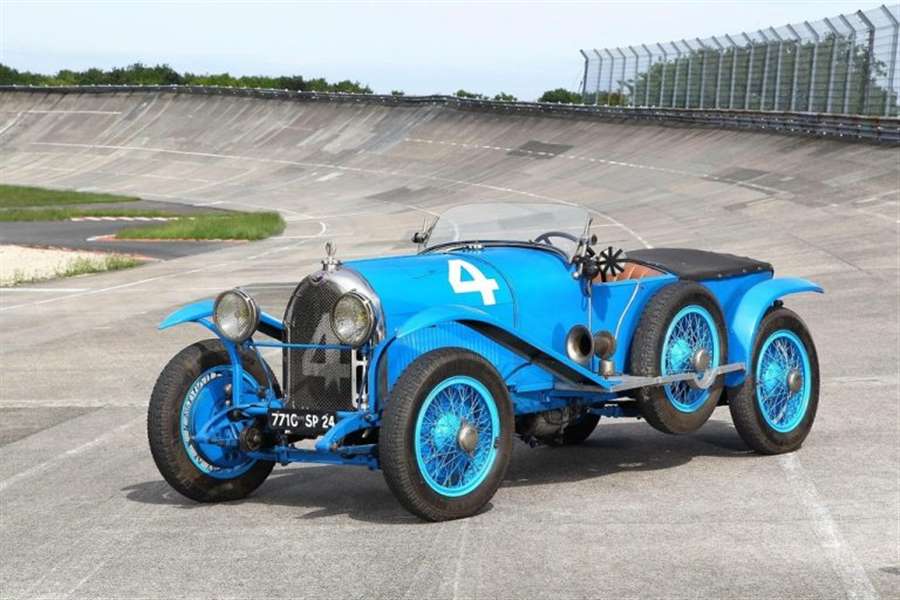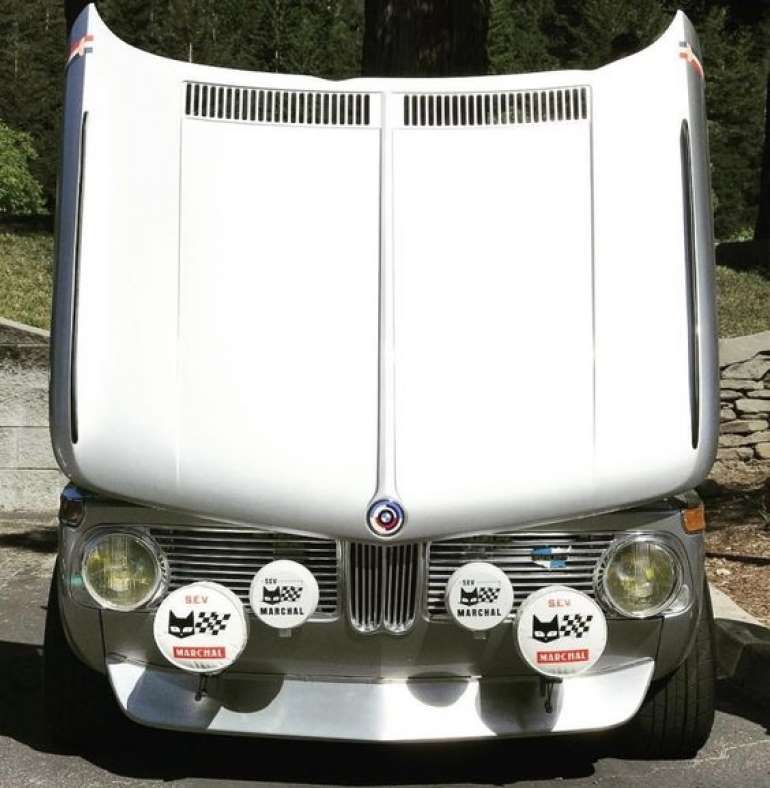In short, a cat. A solid, black cat, so dark that it is almost invisible when in the dark and closes its eyes. But when he opens his eyes, he gives a light and a reflection that he can rarely copy and project accurately.
Although we all take for granted the name "cat's eyes" for reflective plates located on the pedals of bicycles or among the spokes of the wheels, it is a newer and younger "invention" than the original black cat and has been used for only forty years.
At the very beginning of the 20th century, Pierre Marchal, then in his twenties in the army and with a newly issued car license, met Renault Louis. With it, he explores the mechanics and possibilities of introducing electronics in vehicles, and also somewhat into functional things for life.
Thus began his many years of learning, research, and progress that would completely reverse the view of racing from Le Mans to Monte Carlo in the 1950s and 1960s.

A few years after the First World War, Marchal, with a few friends and colleagues, opened a company in the suburbs of Paris. More precisely a garage.
In that garage, with joint efforts and intelligence, they created and produced things like projectors, dynamos, starters, headlights and some other things. The vast majority of French manufacturers relied on their products and increasingly used them in their factories.
According to the original story, Pierre Marchal was a big fan of his black cat who was a regular guest in the garage. Returning home late at night, he saw in the headlights the glare of the said cat and outlined an idea that would completely change the course of his business. It is written in history as a black cat - a lucky cat under the slogan "I lend my eyes only to Marchal" or in the original form "Je ne prête mes yeux qu'à Marchal". And this is not surprising because the French adore cats - as animals, in art form and in the world-famous illustration Le Chat Noir. This story is also connected with the belief in the matagot - a spirit in the shape of a black cat that is waiting for you at the crossroads between this and that world, and if you feed it well, it will provide you with almost infinite wealth.
Basically, a typical cat - give good food and everything will be as it should be.

The first major successes were achieved three years later. Ie. when Marchal became a sponsor of the Monte-Carlo Rally and participated in the victory at Le Mans. Drivers Robert Bloch and Andre Rossignol as the first two-time winner of the Le Mans race, drove the likable Lorraine-Dietrich B3-6 with Marchal headlights. The fact that they were the first to make fog lights for race cars only contributed to the company’s business rise.
Until the early 1930s, Marchal used his headlights to adorn models from Hispano-Suiza, Delahaye, Talbot and others. And according to the James Bond novels, the first official car "007" was the so-called Blower Bentley from 1931, which is also illuminated by a "cat".
It is worth mentioning that this Bentley was produced in only 55 copies between 1929 and 1931, and that the current price of the surviving Blowers ranges from 400 thousand to almost 5 million dollars. It would be a small price packed with "cat's eyes".
The rise in production and popularity took a break during World War II, after which the branding of the “black cat” took off. In this new era for Marchal, the cat on the advertising poster begins to juggle car parts, wears lamps in his paws, drives a car with a helmet on his head and waves the target flag. And that attracted the Ferrari 375 Plus in 1954, which won the 24 Hours of Le Mans in the hands of drivers Gonzalez and Trintigant and also did fantastic marketing.

Immediately after that, Lancia took Marchal as the official supplier instead of the previous headlights and earned a victory at the Monte Carlo Rally. This makes the "black cat" even more popular.
In order to promote the diversity of the vehicles on which their headlights were worn, the company redesigned Citroën’s H-Van.
They mounted on it almost everything they produced at the time. That is, all types and sizes of lights, trumpets, car parts, and the roof was adorned with a huge S.E.V. Marchal inscription.
If you find yourself near the 24 Hours of Le Mans Museum, you can watch this decades-old installation live.
In the early 1960s, a logo made up of a cat and a black-and-white flag “cemented” Marchal as instantly recognizable and closely tied to motorsport. And the list of cars with which Marchal lends "eyes" also includes the retro racer Ferrari 330, which in 1962 was driven by driver Phil Hill to win the 24 Hours of Le Mans. It was a particularly notable victory, as it was the first to be achieved with so-called iodine projectors. That is, the headlights that are in it road use has just been tested in Marchal.
With a solid foundation and success to date, Marchal's "eyes" were also found on the Porsche racing derivatives of the 911 and the legendary 917. In addition to the famous racers from Zuffenhausen, Marchal has installed its headlights on another legend, the Ford GT40. On that Ford racer, Marchal contributed to winning several victories in the 24 Hours of Le Mans in the late 1960s. And then Renault Gordini and BMW Alpina also fell in love with the "black cat".
Since the founder and originator of the whole idea, Pierre Marchal, passed away at that time, there has been a slight slowdown in success and a change in business. As a result, the competition is a little free of the road to the title of winner. In the early 1970s, Ferodo took over Marchal's business and led it in a slightly different direction. This reduces the emphasis on headlight production, but improves the production of the remaining parts.
A few years later, Cibie, as the biggest competitor, joins forces with Marchal and becomes something that is known to this day as the Valeo Group.

In addition to Cibie, PIAA was also the main competitor in rival circles. Although it was founded a decade before Marchal, it was still not as successful as the "black cat". But it is still active with a huge opus of headlights that could be needed in the market.
When it comes to competition, at the very mention of the name Bosch the first association will rarely be light. But even that company has found its sun in the domain of lighting parts on cars. One of the specifics of this company were asymmetrical lights, ie headlights with which the driver's side gave more illumination than the passenger's side. Due to this asymmetry of the headlights, the glare in traffic was reduced.
The Italian company Carello was also founded before the First World War. And it has earned its success in the domestic market by producing fog lights. After all, how can you even imagine an Alfa or a Lancia without an Italian fog light on it?
In the Balkans in the 1970s, there was also the company Saturnus. This company is still present and today it acts as the main sponsor of the Slovenian race called Saturnus.
In the early 1990s, this company replaced the metallized substrate with heat-resistant plastic in all its lights and thus made a huge step forward. It is still present on the market today and, in addition to continuous development, is also engaged in the production of fog lights, daytime running lights and multifunctional lamps.
As developments in production intertwined the ups and downs of all companies, Marchal continued to make its way through factories as a classic that simply had to be found on even more different car models. Thus, on the one hand we have the Citroën DS, or the legendary "Frog" with "cat's eyes" that the headlights of this company drive on European roads, and on the other hand we have almost every Mustang GT that was produced in the first half of the eighties.
Although Marchal has been going through various combinations and partnerships throughout its glorious history, in the 1980s this company became part of the Valeo Group, of which it is still a part together with Cibie. Looking through history, it is clear that in his time Pierre Marchal with his “black cat” provides very good visibility for some of the fantastic car models. Throughout its rich history, this company has been ubiquitous and esteemed during the so-called "vintage motorsport" and legendary races such as 24 Hours of Le Mans, which new generations could witness through the recent film adaptation of "Ford vs Ferrari".
The name of the company Marchal, according to some allegations, was bought in 2009 by a Japanese company that manufactures headlights for cars. But with all the modifications and differences, car enthusiasts have a hard time agreeing to call something like that a last name that meant the best of the best in the 1950s and 1960s.
Who would have thought that an ordinary, happy black cat helped in something like that.
automobili.hr











